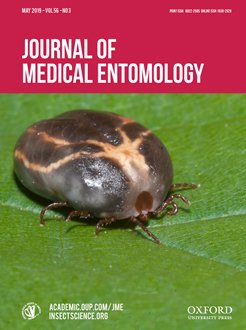Caprine theileriosis is a major production problem in regions of the world that rely on goats as a major source of milk, meat, and other means of economic income. Theileria ovis and Theileria lestoquardi are responsible for caprine theileriosis in Pakistan. The present study examined the prevalence of Theileria spp. infection using polymerase chain reaction (PCR) and light microscopy of blood collected from goats from Multan, Pakistan. In addition, the prevalence and identity of the genus of ticks feeding on these goats was determined on specimens collected at the time of blood sampling. The current project hypothesized that Theileria spp. prevalence would be higher in goats infested with ticks than goats without tick infestation. Four hundred and sixty-three blood samples from goats were analyzed, and the prevalence of infection was 16.0% (95% confidence interval [CI] = ±5.96) 74 of 463 by PCR and 5.4% (95% CI = ±7.79) 25 of 463 by microscopic examination. Thirty-six (48.6%, 95% CI = ±4.96) and 30 (40.5%, 95% CI = ±7.10) of 74 samples were positive by PCR for T. ovis and T. lestoquardi, respectively. Eight samples (10.0%, 95% CI = ±9.61) had mixed infections of these Theileria species. Infection was observed significantly (P < 0.05) more often in male 22.8%, 95% CI = ±3.85 (23/101) than in female 14%, 95% CI = ±2.36 (51/362) goats. No statistical (P > 0.05) difference in prevalence was present among the three age groups of ≤1 yr (12.6%, 95% CI = ±6.70), 1–4 yr (16.2%, 95% CI = ±8.24), and ≥4 yr (17.7%, 95% CI = ±11.30) goats examined.Two hundred and one (43.4%, 95% CI = ±7.45) goats were infested with ticks, Rhipicephalus spp. and Haemaphysalis spp., which are capable of transmitting Theileria spp.Tick infestation was found to be a significant (P < 0.05) risk factor for infection. Prevalence of Theileria infection in goats was significantly higher (P < 0.05) in the summer compared with the other three seasons. Data from this study support our hypothesis and demonstrate that both T. ovis and T. lestoquardi are highly prevalent in goats from Multan, Pakistan.
How to translate text using browser tools
28 January 2019
Molecular Epidemiology and Prevalence of Theileria lestoquardi and Theileria ovis Infection in Goats Infested With Tick Vectors From Multan, Pakistan
Muhammad Riaz,
Muhammad Mudasser Nazir,
Zahida Tasawar,
Atif Nisar Ahmed,
Muhammad Mazhar Ayaz,
Qaisar Akram,
David Scott Lindsay
ACCESS THE FULL ARTICLE
It is not available for individual sale.
This article is only available to subscribers.
It is not available for individual sale.
It is not available for individual sale.

Journal of Medical Entomology
Vol. 56 • No. 3
May 2019
Vol. 56 • No. 3
May 2019
caprine theileriosis
Haemaphysalis spp
polymerase chain reaction
Rhipicephalus spp.
Theileria lestoquardi
Theileria ovis





